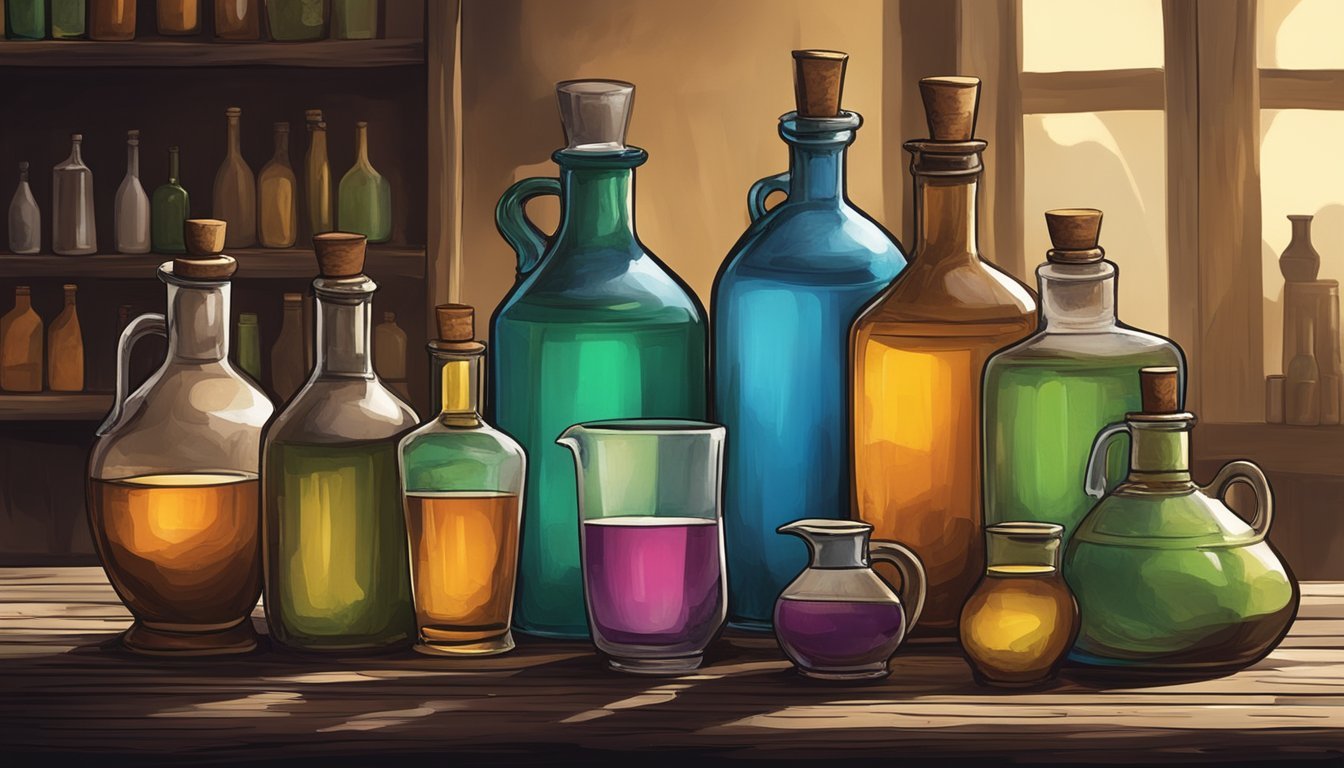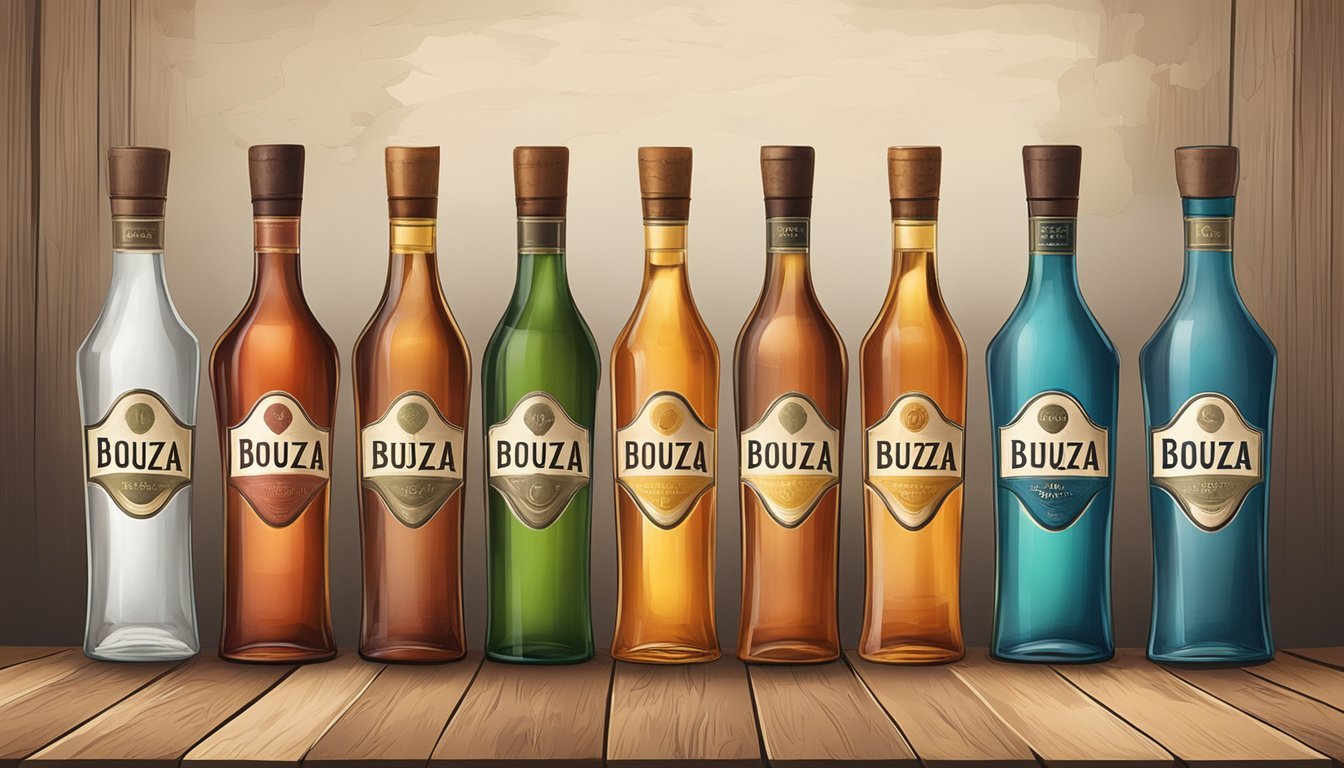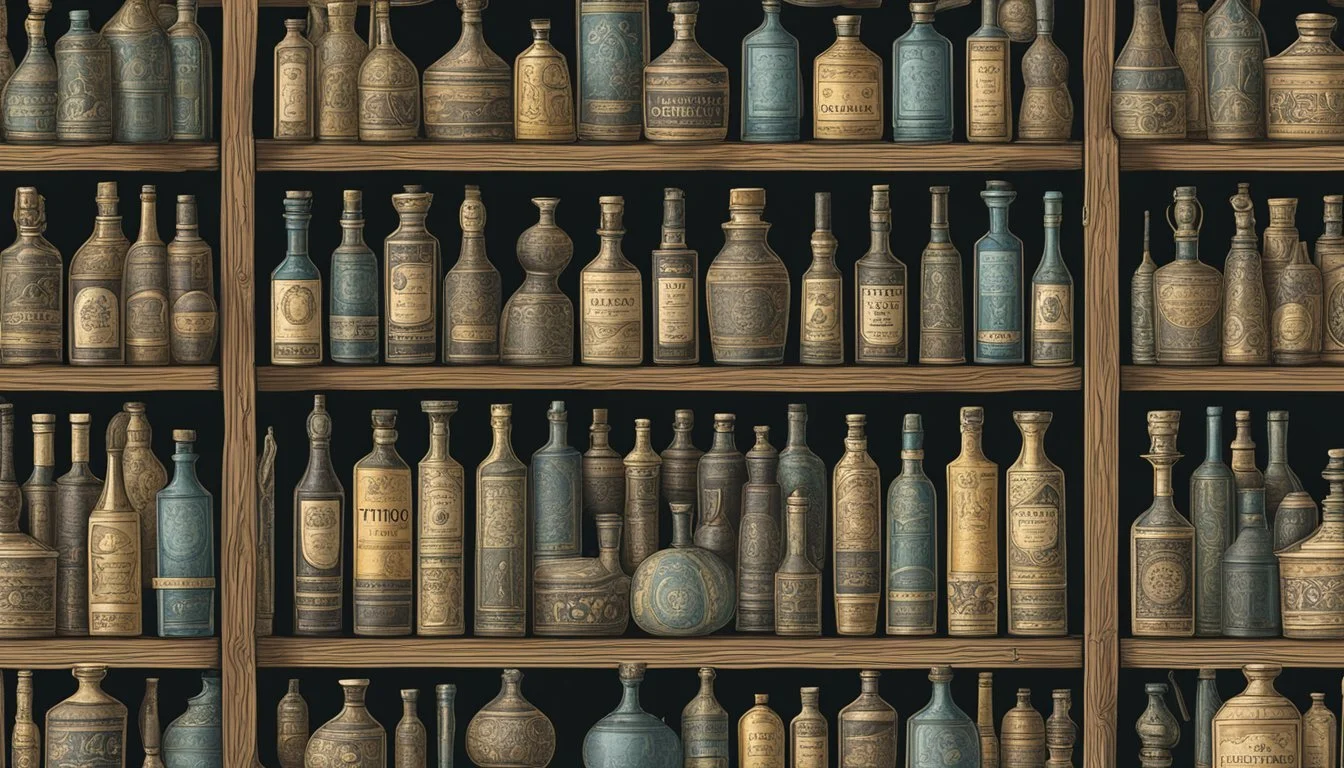10 Ancient Alcohols
Discovering the World's Oldest Brews
Ancient cultures around the world have a long history of crafting and consuming alcoholic beverages. These early drinks not only provided a means of enjoyment and socializing but also played significant roles in religious ceremonies and societal functions.
Exploring the origins and varieties of these ancient alcohols offers insight into the ingenuity and cultural practices of our ancestors. From the earliest fermentation processes to the creation of diverse brews, ancient alcohols have shaped human civilization in many profound ways.
1) Mead
Mead, often considered the world's oldest alcoholic beverage, dates back thousands of years. Made by fermenting honey with water, mead can also include fruits, spices, grains, or hops. Its alcohol content varies widely, ranging from 3.5% to over 20%.
Ancient cultures in China, Greece, and Africa are among the earliest to have produced mead. Evidence suggests that the drink was made as far back as 7000 B.C. in China. Archaeological findings show traces in pottery jars containing honey, rice, and wild grapes.
In Africa, mead might have been consumed even earlier. Some historians claim that it was a staple among tribes living 20,000 to 40,000 years ago. Mead was not only favored for its intoxicating effects but also believed to have medicinal properties.
Mead gained popularity in many regions, including Europe. In medieval times, it was especially popular among the Celts and Vikings. The drink often played a role in rituals and ceremonies.
Despite its ancient origins, mead is still enjoyed today. Modern meadery techniques have diversified its flavors, making it available in various styles like sweet, dry, or sparkling. This versatility has led to a resurgence in interest, with craft meaderies popping up around the world.
2) Chicha
Chicha is a traditional beverage from Latin America, with roots in the Andes and Amazonia regions. This drink, either alcoholic or non-fermented, has been cherished since pre-Columbian times. Its most famous variant, chicha de jora, is a corn beer made from various types of maize.
In Peru, chicha de jora is an emblematic drink linked to the Inca Empire. The preparation involves drying corn in the sun, crushing it into powder, and fermenting the mixture. This process has remained largely unchanged for centuries.
In Colombia, particularly in Boyacá, chicha is celebrated during the Fiesta del Huán by the Sun Temple in Sogamoso. It is made from maize, cooked with sugar, and then fermented. This variant is known for its distinct, cultural significance.
Different regions have unique variations of chicha. In Venezuela, it is a white, frothy, alcohol-free drink made from boiled rice and sugar. El Salvador uses corn, pineapple, and panela, offering a sweeter taste.
The method and ingredients can vary widely, but chicha remains an important symbol of cultural heritage throughout Latin America.
3) Pulque
Pulque is a traditional alcoholic beverage from central Mexico. It is made from the fermented sap of the maguey (agave) plant.
Dating back thousands of years, this drink was enjoyed by ancient cultures such as the Maya, Aztecs, and Huastecs. In Nahuatl, the Aztec language, it was called octli.
Pulque has a unique appearance and taste. It has a milky white color and a viscous consistency. Its flavor is sour and yeast-like, setting it apart from other alcoholic drinks.
Despite being mildly alcoholic by itself, the potency of pulque can be increased by adding other substances. There are variations like curado, where it is mixed with fruits or vegetables like guava, oatmeal, or tomato.
Pulque's cultural significance is notable. It was often referred to as the "drink of the gods" and held an important place in Mesoamerican rituals and society. This historical relevance continues to influence its production and consumption today.
4) Soma
Soma, a significant part of ancient Vedic rituals, was a fermented juice drink. This beverage was believed to have been consumed by Hindu gods and brahmanas during religious ceremonies. It was thought to have healing properties and the ability to bring great riches.
Soma is personified by a deity of the same name, associated with sacrifices and possibly the Moon. The drink's composition involved extracting juice from stalks of a plant, potentially hallucinogenic, which induced a sense of divine intoxication.
Soma's importance extended to Persian culture, known as Haoma in Avestan. Indra and Agni, gods in Vedic traditions, are often depicted consuming Soma to gain immortality. It was perceived as a connection to the divine.
In Hindu iconography, Soma might appear as a god on a chariot drawn by ten white horses. Other depictions include a celestial bull, a rising giant from the waters, or even an embryo. The sacred nature of Soma highlights its role beyond mere intoxication, emphasizing spiritual and ritual significance across cultures.
5) Bouza
Bouza is an ancient fermented beverage with deep roots in Central Asia, Turkey, and North Africa. It has been consumed for over 8,000 years, making it one of the oldest known alcoholic drinks. Bouza is traditionally made from grains such as maize or wheat.
The fermentation process of bouza involves boiling the grains, straining the mixture, and allowing it to sit. Yeast and sugar are then added to initiate fermentation. This mixture is left at room temperature for about 24 to 48 hours. During this period, the yeast converts the sugars into alcohol and lactic acid.
Bouza is known for its thick consistency and tangy flavor, which results from the fermentation process. The alcohol content is relatively low but enough to give it a distinctive character. It is often enjoyed as a refreshing and nutritious drink. The simplicity and historical significance of bouza make it a fascinating subject within the world of ancient alcoholic beverages.
6) Kumis
Kumis is a traditional dairy beverage originating from Central Asia. It is primarily made from the fermented milk of mares. Unlike kefir, which uses solid "grains" for fermentation, kumis is produced using a liquid starter culture.
Mare's milk has a higher sugar content than cow's or goat's milk. This results in kumis having a mild alcohol content of roughly 2% after fermentation.
Historically, kumis was consumed by nomadic peoples such as the Mongols and Scythians. The milk was often poured into wooden casks and stirred vigorously to promote fermentation.
Kumis has a distinctive foamy appearance and is slightly alcoholic. It is known to have fortified Central Asian nomads, providing essential nutrients and hydration. Today, it remains a cultural staple in various regions.
7) Sura
Sura, a potent alcoholic drink, traces its origins back to the Indian subcontinent. References to Sura can be found in ancient texts like the Rigveda, one of the oldest religious texts.
Crafted from grains like barley, Sura was not only a common beverage but also held ceremonial significance. Ancient medical texts describe its use as an anesthetic for surgical procedures.
This drink was embraced by various cultures, including the Sumerians and Egyptians. Its high alcohol content, sometimes comparable to modern distilled beverages, contributed to its strong effects.
Ancient accounts often describe Sura as having a sharp, intoxicating potency. This made it both a valued ritual beverage and a powerful anesthetic.
8) Huangjiu
Huangjiu, also known as Chinese yellow wine, has played a significant role in Chinese culture for thousands of years. Its history goes back over 7,000 years, making it one of the oldest alcoholic beverages in the world. Huangjiu is brewed using rice, water, and a fermentation starter known as qu.
This traditional beverage is not distilled but rather fermented, resulting in an alcohol content typically between 10% and 20%. The production process involves multiple stages, including steaming the rice and fermenting it in a controlled environment. This method gives Huangjiu its unique flavor and character.
Huangjiu has a wide range of varieties, each differing in taste, color, and aroma. Popular types include Shaoxing wine, which is well known for its rich, mellow flavor. The aging process is crucial to Huangjiu's quality, often improving the drink's complexity and taste over time.
Storage conditions for Huangjiu need to be carefully managed. It is best kept in cool, dry places to encourage proper aging and to prevent spoilage. Unlike other beverages, Huangjiu should not be stored in metal containers to avoid undesirable chemical reactions that can alter its flavor.
Huangjiu's versatility allows it to be enjoyed as a standalone drink or used in cooking to enhance the flavors of various dishes. Its cultural significance and historical roots continue to make it a valued part of Chinese heritage.
9) Zythos
Zythos, or ζῦθος in Greek, is an ancient beer with roots tracing back to Egypt. Its name appears in various historical texts, including works by Homer and records from ancient Greek and Egyptian cultures.
The brewing process of Zythos involved fermenting a mash made of barley. The resulting liquid had an alcohol content ranging from six to twelve percent.
Ancient Greeks often consumed Zythos using straws to avoid the gruel-like mash that settled at the bottom. Despite its prevalence, many Greeks considered Zythos undrinkable and inferior to wine.
Hippocrates, known as the father of medicine, believed beer, including Zythos, had medicinal properties. This highlights the role of beer in ancient health practices.
In addition to Greece, Zythos was widespread in ancient Egypt, where the earliest brewing records originate. By 2000 BCE, Egyptians were producing this malt beer, showcasing its long-standing historical significance.
10) Kvass
Kvass is a distinctive fermented beverage that originates from northeastern Europe. This low-alcoholic drink is typically made from rye bread, giving it a cloudy appearance and a sweet-sour taste.
The first written mention of Kvass dates back to 996 AD in the Primary Chronicle, which describes a celebration in honor of Vladimir the Great's baptism.
While commonly associated with Russia, evidence suggests that similar drinks existed in Ancient Greece and Egypt.
Traditionally, kvass was produced by fermenting bread with water and malt. In ancient times, it had a higher alcohol content, but modern versions typically contain about 0.5% alcohol.
Kvass played an essential role in Russian culture, often referred to as "bread in a bottle." It was an accessible alternative to beer in regions where grain production was insufficient.
This drink was widely consumed due to its refreshing qualities and slight effervescence, which made it a popular choice, especially in the summer months.
Historical Significance
Ancient alcoholic beverages played pivotal roles in cultural and economic history. They influenced social rituals and were integral to trade and commerce across various civilizations.
Cultural Impact
Alcoholic beverages were deeply interwoven with cultural and religious practices. In ancient Sumer, beer was considered a gift from the goddess Ninkasi, symbolizing divine favor. Similarly, in Egypt, beer and wine were offerings to gods in temples and used during ceremonies.
In Greece, wine was a staple of daily life and integral to symposiums, where philosophical and political discussions took place. It was also prominent in Roman culture, used both in feasts and religious rites, highlighting its broad social relevance.
In China, ancient alcoholic beverages like those found in Jiahu were likely used in festivals and rituals, showing their cultural prominence. Each region's unique alcoholic beverages reflect its societal values and spiritual beliefs.
Trade and Exchange
Alcoholic beverages were not confined to local consumption; they played significant roles in ancient trade. The wine trade in the Mediterranean is a prime example. Greek and Roman merchants exported wine across Europe and North Africa, establishing robust trade networks.
In the Middle East, barley beer was widely produced and traded, even influencing brewing practices in other regions. Trade routes facilitated the exchange of not just goods but also brewing techniques and ingredients.
Chinese rice wine from Jiahu showcases early examples of long-distance trade, with ingredients sourced from various regions. These trade activities underscore the economic importance of alcoholic beverages in ancient times.
Production Methods
Ancient alcohols were crafted through various fermentation and distillation processes developed by different cultures. These techniques reflect both the resources available and the cultural significance of the libations produced.
Fermentation Processes
Fermentation is the oldest method for producing alcohol and relies on yeast to convert sugars into alcohol and carbon dioxide. Ancient civilizations used a variety of raw materials based on regional availability.
The Sumerians brewed beer from barley, while the ancient Chinese fermented a blend of rice, honey, and fruit. Ancient Egyptians also favored beer, often including ingredients like emmer wheat and dates. In the Americas, the Incas produced chicha from maize by partially chewing the corn to start the fermentation process with enzymes in their saliva.
These techniques required careful control of the fermentation environment, including temperature and cleanliness, to ensure successful production.
Distillation Techniques
Distillation involves heating a fermented liquid to separate alcohol from water and other components based on differing boiling points. Although distillation became widespread much later, some ancient practices hinted at rudimentary distillation techniques.
Ancient Mesopotamians may have had early knowledge of distillation as they produced liquid mixtures that were heated to concentrate essences and fragrances. In China, early forms of distilled beverages appeared around the Han Dynasty, around 200 AD.
The process generally involves boiling the fermented liquid in a pot still and collecting the vapor that condenses into a stronger alcoholic solution. Key elements include maintaining precise temperatures and ensuring a sealed environment to prevent loss of the alcohol vapor.
Ancient Ingredients
Ancient alcoholic beverages were crafted using a variety of ingredients native to their regions. The primary components included local botanicals and a mix of grains and fruits, each contributing unique flavors and properties.
Local Botanicals
In many ancient cultures, botanical elements played a crucial role in alcohol production. Chinese alcoholic beverages, for instance, included hawthorn berries and local herbs. These botanicals enhanced the drink's flavor profile and had potential medicinal benefits.
In ancient Egypt, brews often contained dates, which added sweetness and a richer taste to their concoctions. Indian beverages, like the historic soma, utilized a mix of herbs that were believed to have divine properties. Such botanicals not only flavored the drinks but also tied them to spiritual practices.
Grains and Fruits
Grains were foundational in many ancient alcoholic recipes. The Chinese village of Jiahu used rice combined with grapes and honey to create an early form of mead. Ancient Mesopotamians produced barley beer, reflecting their agricultural practices and available resources.
Fruit was another key component. Mediterranean cultures often used grapes to make various wines, taking advantage of the region's abundant vineyards. Meanwhile, cultures in South America used corn to ferment chicha, a traditional beverage. These ingredients were significant not only for their availability but also for their ability to produce a wide range of flavors and styles.
Social and Ritual Use
Alcohol has played a vital role in the social and spiritual lives of ancient cultures, serving both as a means of daily sustenance and as a tool for religious or ceremonial communication with the divine.
Ceremonial Practices
In Ancient China, libation rituals were central to royal and religious ceremonies. Kings used alcohol in their court rituals to legitimize their rule and to communicate with ancestors. These practices began in the Liangzhu society and evolved through the Bronze Age.
Ancient Egypt also placed significant ceremonial importance on alcohol. Beer was a staple offering to the gods and featured prominently in both public and domestic rituals. Temples often had dedicated breweries to supply the necessary libations for religious ceremonies.
For the Incas, chicha, a corn beer, was a prominent part of festivals. Consuming this beverage in large quantities was believed to enable communion with deities. The use of alcohol in such ceremonies was a way to maintain social harmony and religious observance.
Day-to-Day Consumption
Day-to-day consumption of alcohol in ancient societies was not only common but often seen as essential. In Ancient Egypt, the daily diet typically included beer, which provided essential nutrients and hydration. This beverage was consumed by all social classes, from workers to royalty.
In Ancient China, alcohol was also a part of daily life but consumed with greater ritualistic significance. Banquets and feasts, where alcohol flowed freely, reinforced social hierarchies and alliances. These gatherings often involved competitive drinking, serving as a form of social regulation and cohesion.
Similarly, the Incas used chicha in everyday social contexts, signifying hospitality and strengthening community bonds. This everyday use of alcohol was integral to social life, helping to define and reinforce cultural identity and social structure.







